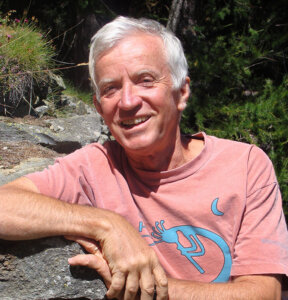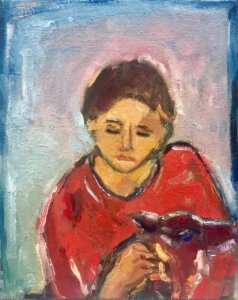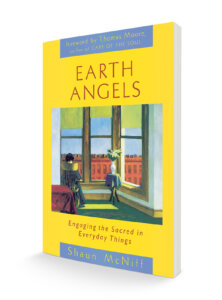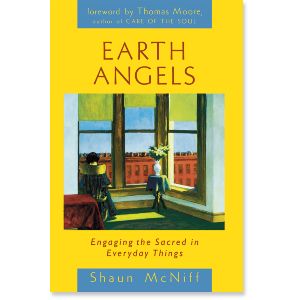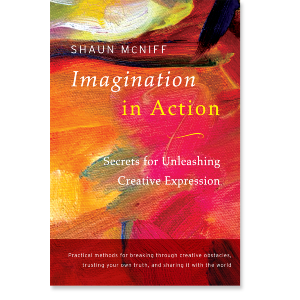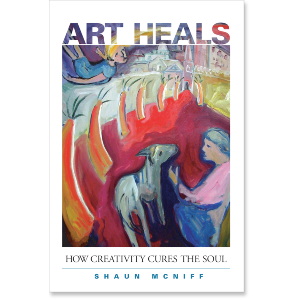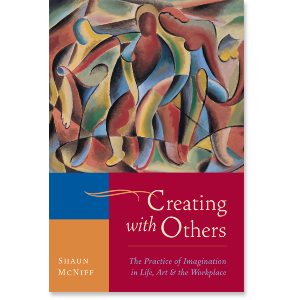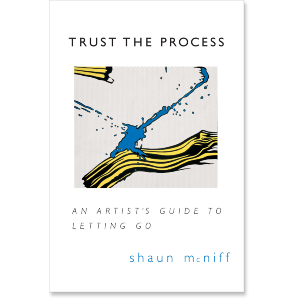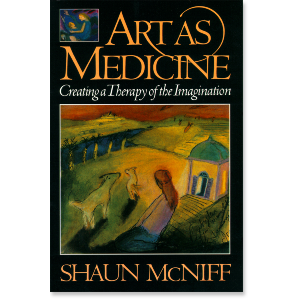Angels are a way of looking at the world, infusing life with creative vitality and renewing our sense of the sacred. I am more concerned with seeing things with an angelic sense than with the literal discovery of angels.
Locating angels exclusively in the supernatural world banishes them from niches in neighborhoods and the workplace. My emphasis is noncelestial, but like most people I'm intrigued with airy spirits. I've got nothing against them. The problem lies in overlooking spiritual or subtle expressions of physical things, the earth angels available to the most ordinary consciousness. This way of looking might bring renewal, but it is not new. It lives through a tradition, deep waters flowing from antiquity, forever revitalizing themselves through changing forms.
Because I live in a world of physical images, I am drawn to this aspect of the angel. My meditations on angels have been shaped through years of clinical work with the arts, where it has become clear that images offer spirits to the people who make them or look at them. Like the images of the arts, angels come and go with the rituals we perform. Helping people access the medicine offered by the arts has kept me rooted in the material realm of soul's expression, where the images constantly call out for attention and for deeper and more imaginative interactions. I have come to angels through the aboriginal creative expressions of ordinary people in my art studios, where I have been taught many lessons about the soul's hunger for imagery. When these epiphanies appear in dreams, meditations, or the arts, we are faced with options as to how we will engage them. The rationalists explain them away as discharges of excess energy, whereas I prefer to welcome them as intimate figures of our inner lives.
I have been caught by surprise by the huge public interest in angels and find myself in the position of offering yet another angel book. But I hope the idiosyncrasies of my personal search will offer something different and useful to the discourse.
The guidebook reader asks, "How do I do it? How do I find the angels?"
I suggest looking at the most basic assumptions of your life, the things you take for granted, the stories you tell, your imaginings and desires. I will try to show how re-visioning the most common aspects of life yields an influx of imagination and angels. The richest veins are in the most unlikely sources. What we do not see is typically lodged in places where we do not want to look, or in those things we think we really know. Parents and childhood memories always evoke the earth angels. Tell the outrageous, embarrassing, and strange stories of your childhood, the ones you would never dare publish, and watch how people love to hear these things. It worked for Freud.
When we locate the angel "above" humans and closer to God, we are operating within a perspective that sees God as transcendent rather than immediate and present in everything. Rather than take sides on this ancient debate, I accept both. But this book is written from the latter perspective, which has been overlooked. I am concerned with the particular ways in which the divine presents itself through the forms of the world and their subtle expressions, what I call earth angels.
We really cannot operate within the realm of angels without affirming the divinity from which they emanate. I envision the divine source of all life as a mystery whose names include God, the numinous presence, the Creator, and other equally holy words. Jane Harrison described history's different experiences of the divine as images of desire. This does not suggest falseness. The desire for the divine is the core, the appetitus naturalis, the instinctus divinus.
In addition to addressing the spiritually oriented reader, I want to approach angels in a way that engages skeptics, materialists, cynical artists, suspicious depth psychologists, and the average person. Anybody who can perceive through the senses can experience the angels I will be evoking. They do not require extrasensory perceptions of any kind, but they ask that we reconsider how we relate to things. Angels are the "intermediaries," the perceptual images and imaginings that exist between myself and the physical world.
The arts and religion come together through angels and soul's natural desire for images and intimate relations with persons, places, things, and spirits. The spiritual reverie makes endless configurations. I liken images to angels, and this connection between physical things and their spiritual expression is the purpose of this book. The temples of the spirit are expanded to include our homes, workplaces, likes and dislikes, and other uncommon places for locating the divine.
Because angels are so closely associated with individual imaginations, I will try to evoke their presence by writing a personal book. My dialogue with the figures of the imagination will, I hope, support yours as others have inspired me. The creative spirit is a community of influences in which the angels of our expressions stimulate one another.
Reflections on angels help to deepen connections to the physical world. Conversely, I have found that giving careful attention to the physical details of a person, object, or landscape evokes the angels through feelings of depth. Sustained attention to the particulars of a thing passes through resistance and opens the soul. "Depth" often has more to do with staying in compassionate and attentive contact with the presence of another than with revealing "deep" secrets, which may take us away from the immediacy of the present engagement. Deep down is always right here and now. The angel can be imagined as the energy that exists between things and that furthers the process of relating.
Like a dream, the angel comes in its own time. It cannot be rushed or controlled. We prepare ourselves by readying the psychic household for guests and displaying welcoming signals. If we want the spirits of the dream, we have to participate in their world. The same thing applies to creative expression. Like dreams, the arrivals of art cannot be planned in advance. If we begin to write, to paint, to move or make sounds, the creative images will appear. If we designate shrines and places of meditation in our households and focus attention on them, the angels will present themselves. We woo the images with these affections and never take them for granted. It is a lifelong cultivation of imagination, and we find that the well-being of our souls is closely attuned to the way we interact with material things. We are beginning the long psychic recovery from centuries of nature abuse fueled by the religious command "Love not the world and its things."
$29.00 - Paperback
Shaun McNiff